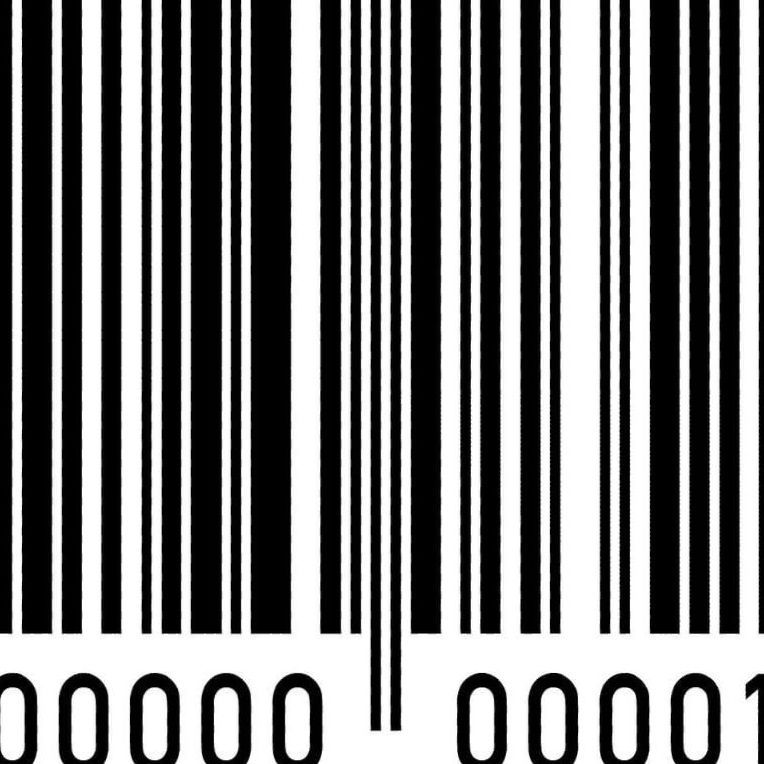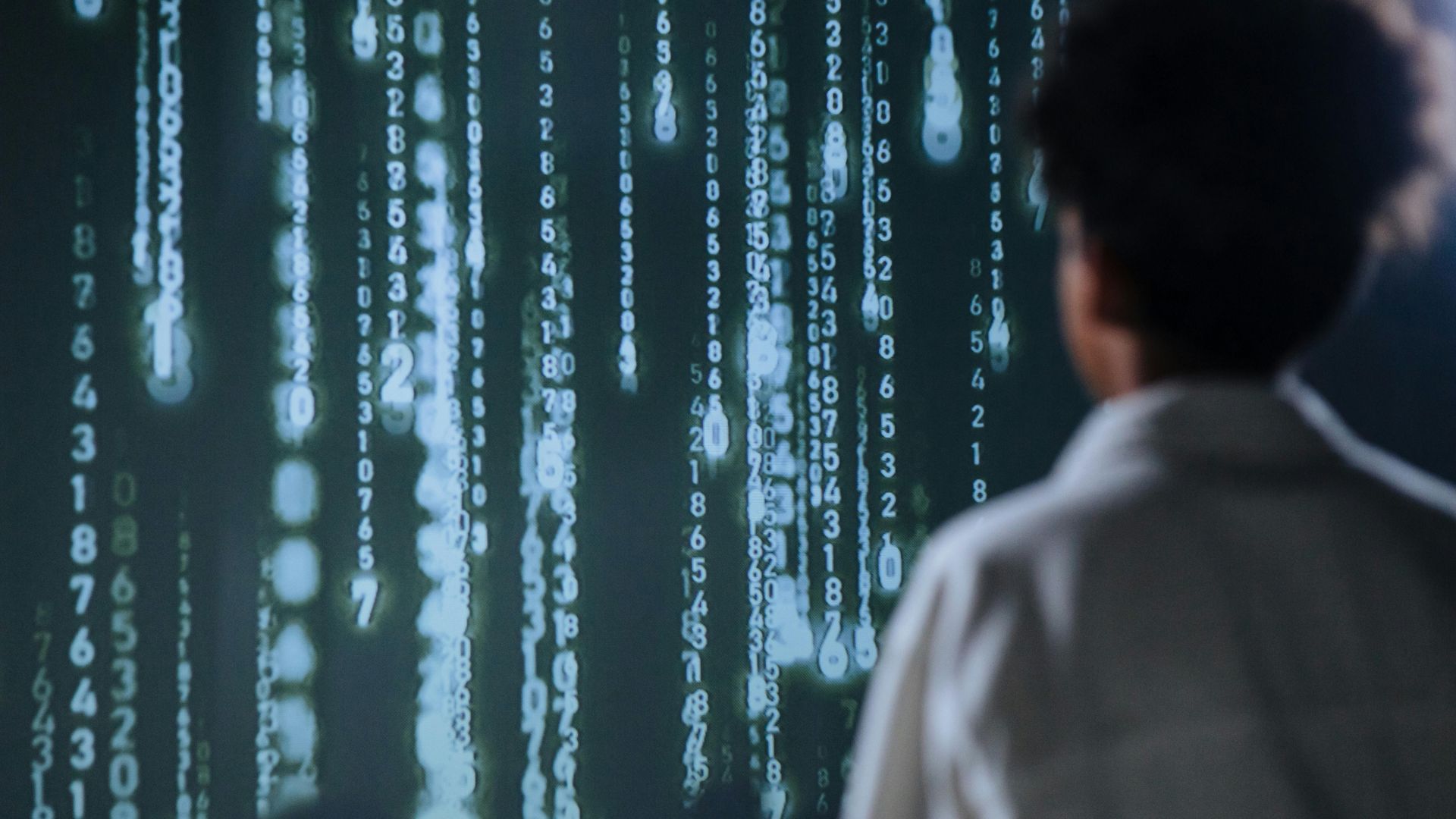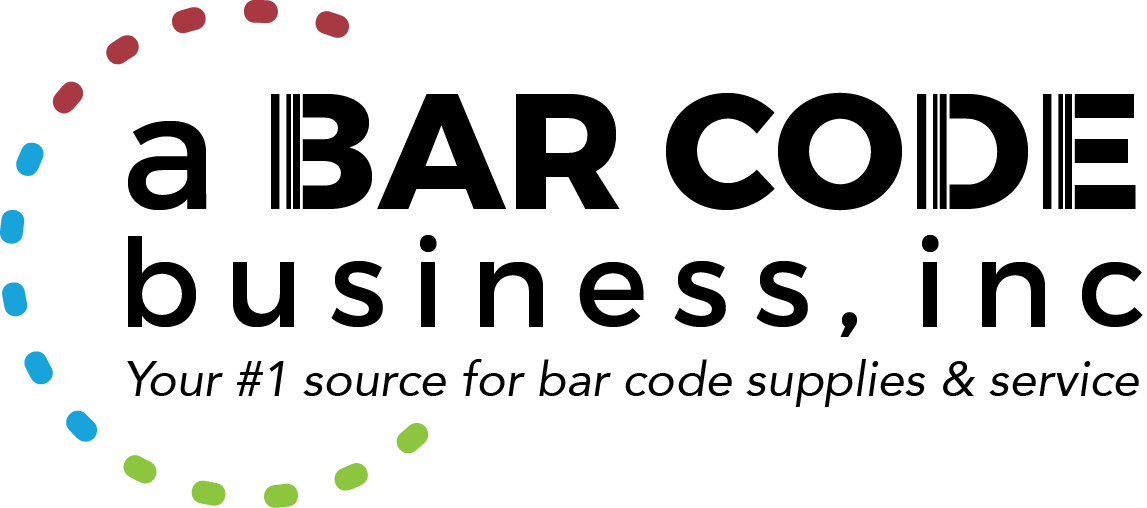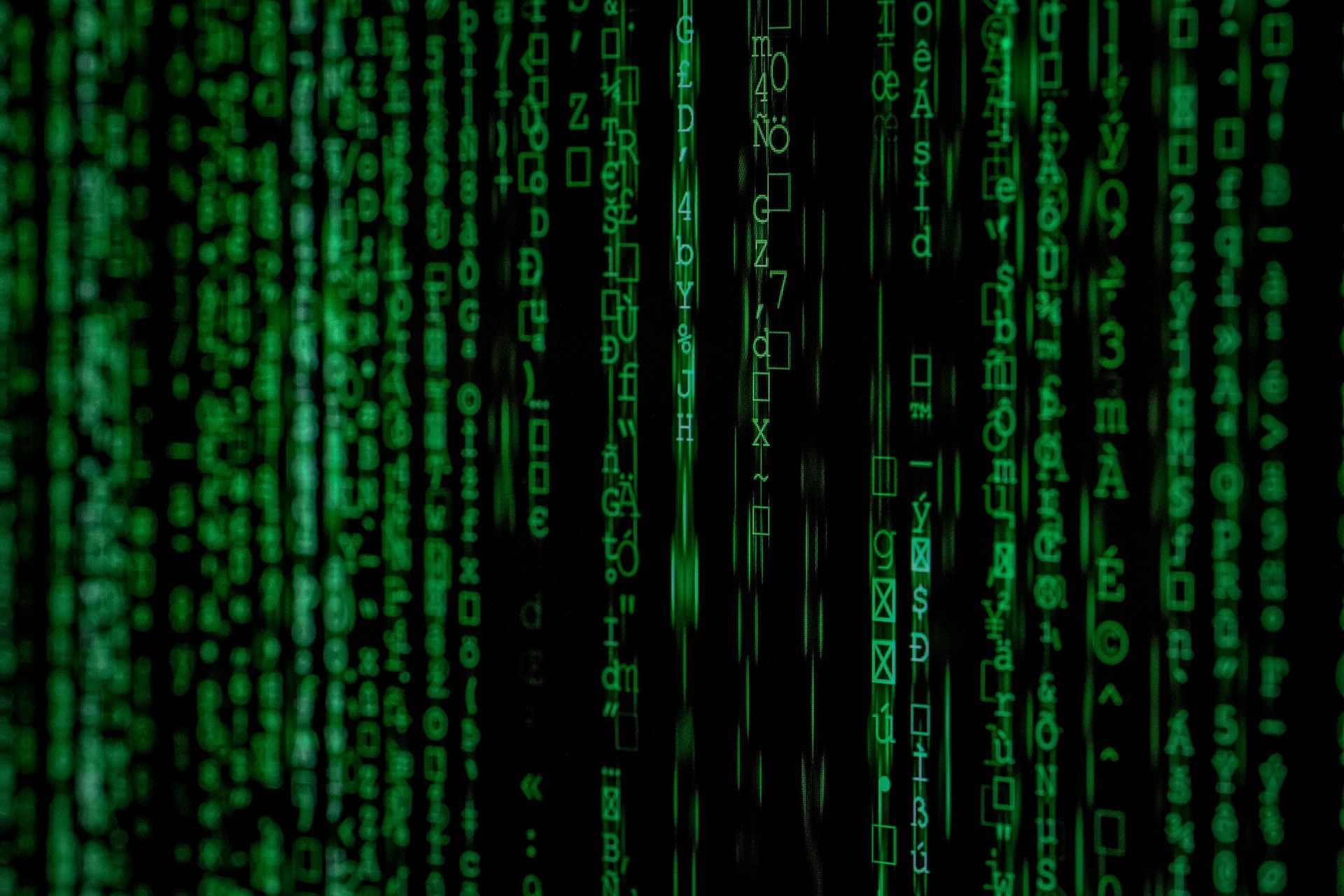Glossary of Bar Code Terms
List of Services
-
2-Dimensional Bar Code Symbology composed of rows of data arranged in a rectangular or square pattern. The rows are stacked onto each other to encode an array of data.2-Dimensional Bar Code
-
AIM Automatic Identification Manufacturers- Organization supported by manufacturers and suppliers of automatic identification products and services.AIM
-
Alphanumeric The character set which contains letters, numbers and may contain other characters such as punctuation marks or control characters.Alphanumeric
-
ANSI American National Standard Institute is a non-governmental organization responsible for the development of standards such as manufacturing.ANSI
-
Antenna In a radio frequency identification system the antenna is the device which radiates and or receives the RF energy.Antenna
-
Aperture The opening in an optical system used by scanners, sensors, and other devices to establish the field of view.Aperture
-
ASCII Characters set for the American Standards Code for Information Interchange Exchange encoding 7-bit characters (8-bit with parity).ASCII
-
Aspect Ratio In a bar code symbol, the ratio of bar height to symbol length.Aspect Ratio
-
Autodiscrimination The ability of bar code reading equipment to recognize and correctly decode more than one symbology.Autodiscrimination
-
Background An area surrounding a printed bar code symbology, including the quiet zone and spaces.Background
-
Bar The darker element of a bar code symbol.Bar
-
Bar Code An automatic identification technology which encodes information into an array of varying width parallel and rectangular bars and spaces.Bar Code
-
Bar Code Character A single group of bars and spaces that represents a specific number of letters, numbers, punctuation marks or other symbols.Bar Code Character
-
Bar Code Density The number of data characters that can be represented in a linear unit of measure. Bar code density is often expressed in characters per inch.Bar Code Density
-
Bar Code Height See-Bar LengthBar Code Height
-
Bar Code Label A label which has been printed with text, bar code data which can be affixed to an article.Bar Code Label
-
Bar Code Length The bar code dimension perpendicular to the bar width. Also called bar height. Scanning is performed in an axis perpendicular to the bar length.Bar Code Length
-
Bar Code Reader A device used to read a bar code symbol.Bar Code Reader
-
Bar Code Reduction Reduction of the nominal bar width dimension on film masters or printing plate to compensate for systematic errors in some printing processes.Bar Code Reduction
-
Bar Code Symbol A set of characters and marks including start / stop character, quite zones, data characters, and check characters required by a particular symbology, that forms a complete scannable element.Bar Code Symbol
-
Bar Code Width The thickness of a bar measured from the edge closest to the symbol start character to the trailing edge of the same bar.Bar Code Width
-
BCD Binary Code Decimal -A numbering system using base 2, that represents each decimal digit by four binary bits, with the weighting values equal to 8, 4, 2, and 1, reading from left to right.BCD
-
Bi-directional A bar code symbol capable of being read successfully independent of scanning direction.Bi-directional
-
Binary The number system that uses only 1's and 0's.Binary
-
CCD Charged Coupled Device-Used in scanners to sense the light and dark areas of a symbol.CCD
-
Character (A.) A single group of bars and spaces that represents a specific number (usually one) of numbers, letters, punctuation marks, or other symbols. (B.) A graphic shape representing a letter, number, or symbol. (C.) A letter, digit, or other symbol that is used as part of the organization, control, or representation of data.Character
-
Character Set Those characters available for encodation in a particular automatic identification technology.Character Set
-
Check Character A character included within a string of data whose value is used for the purpose of performing a mathematical check to ensure the accuracy of that data.Check Character
-
Check Digit Same as a check character, but assumes numeric values only.Check Digit
-
Clear Area See-Quit ZoneClear Area
-
Codabar (2 of 7 Code, Code 27)-A numbers-only bar code consisting of seven modules, two of which are wide.Codabar
-
Code A set of unambiguous rules specifying the way in which data maybe represented. Numbers and letters used to represent information (see Number System).Code
-
Code 128 A continuous, variable length alphanumeric symbology encoding the full ASCII 128 character set. Every character is made up of 11 modules containing three bars and three spaces.Code 128
-
Code 16K Multi-row (staked) code in which each symbol can have between two and sixteen rows or stacks. Each row is separated by a one-module separator bar, and consists of 18 bars and 17 spaces. This analogous to sentences in a paragraph.Code 16K
-
Code 39 A discrete, variable length, self-checking alphanumeric symbology employing two-element widths. Every character has five bars and four spaces; three of the elements in any given character are wide, and six are narrow. Every symbol starts and ends with a unique start/stop character.Code 39
-
Coercivity Value of the opposing magnetic intensity that must be applied to a material to remove the residual magnetism when it has been magnetized to saturation.Coercivity
-
CPI Characters Per Inch -Density of a bar code resulting from the combined size of the narrow and wide bars and spaces, measured on a linear scale.CPI
-
CPS Characters Per SecondCPS
-
CRT Cathode Ray Tube-also known as a terminal or monitor.CRT
-
Data Matrix A variable size two dimensional matrix symbology that is inherently omnidirectional. Data Matrix has a high degree of error correction capability and is used primarily for part marking and tracking.Data Matrix
-
Decoder As part of a bar code reading system, the electronic package that receives the signals from the scanner, performs the algorithm to interpret the signals into meaningful data, and provides the interface to other devices.Decoder
-
Density (A.) Character Density-In a linear bar code symbol, the number of data characters per unit length (typically, per inch). For a discrete symbology, the character width must include the inter-character gap. (B.) Net Data Density-The density of a linear bar code symbol is determined by dividing the number of characters in the symbol by the overall symbol length, measured from the leading edge of the start code to the trailing edge of the stop code.Density
-
Depth of Field The distance between the maximum and minimum plane in which a code reader is capable of reading symbols of a specified X dimension.Depth of Field
-
Direct Thermal A specially coated label material that contains microscopic capsules of ink, which burst when exposed to heat. Direct Thermal material is made to allow scanning in either of two light spectrums: visible light or infrared. Direct Thermal labels are ideal for short applications where the label is not required to last more than 6-8 months.Direct Thermal
-
Discrete Code A bar code symbology where the space between characters (inter-character gap) is not part of the code, e.g., Code 39.Discrete Code
-
DPI (Dots Per Inch) A measure referring to the dot resolution in images created by various printing processes, such as direct thermal, thermal transfer and/or laser printing. Typically, higher DPI represents greater density in a print image.DPI (Dots Per Inch)
-
EAN European Article Numbering system-the international standard bar code for retail food packages.EAN
-
EAN Bar Code See-EANEAN Bar Code
-
FCC Federal Communications Commission-the organization in charge of all forms of communications and radio transmissions.FCC
-
Film Master A photographic film representation of a specific bar code or OCR symbol from which a printing plate is produced.Film Master
-
Fixed Beam Scanner A scanner, that has no moving parts, which uses a stationary light beam to read a moving bar code.Fixed Beam Scanner
-
Font A specific size and style of printer's type.Font
-
FRR First Read Rate -The ratio of the number of successful reads on the first scanning attempt to the number of attempts. Commonly expressed as a percentage.FRR
-
Guard Bars Bars at both ends and center of a UPC and EAN symbol, which provides reference points for scanning, similar to start/stop codes.Guard Bars
-
GUI Graphical User Interface-The visual design of a software application.GUI
-
Human Readable Referring to the representation of the contents of a bar code symbol characterized by alphabetic and numeric characters, as well as special symbols that can be read by a human.Human Readable
-
IAN International Article NumberIAN
-
Intercharacter Gap The space between two adjacent bar code characters in a discrete code.Intercharacter Gap
-
Interleaved 2 of 5 A numeric only bar code consisting of five bars. Two bars are wide, three are narrow. Used generally in industrial and master carton labeling.Interleaved 2 of 5
-
Keyboard Wedge Interface An Y-connector that permits a bar code reader to be connected between the display and a keyboard.Keyboard Wedge Interface
-
Ladder Code See-Vertical Bar CodeLadder Code
-
LCD Liquid Crystal DisplayLCD
-
LED Light Emitting Diode-A semiconductor that produces light at a wavelength determined by its chemical composition. The light source often used in light pens.LED
-
Light Pen In bar code system, a handheld scanning wand that is used as a contact bar code reader held in the hand.Light Pen
-
LOGMARS Logistics Applications of Automated Marking and Reading Symbols-The official government standard with the issuance of MIL-STD-1189A.LOGMARS
-
LPM Lines Per MinuteLPM
-
MaxiCode Fixed size two-dimensional symbology having elements arranged around a unique circular finder pattern. MaxiCode is omnidirectional and is primarily used for freight sorting and tracking.MaxiCode
-
MHI The Material Handling Institute, Inc.MHI
-
MICR Magnetic Ink Character Recognition-The technology commonly employed in the marking of U.S. bank checks. A highly stylized font is printed with ink that has magnetic properties.MICR
-
MIL-STD Military StandardMIL-STD
-
Misread A condition that occurs when the data output of a reader does not agree with the data encoded in the bar code symbol.Misread
-
Module The narrowest nominal width unit of measure in a bar code.Module
-
Nominal The exact (or ideal) intended value for a specified parameter. Tolerances are specified as positive and negative deviations from this value.Nominal
-
Non-read The absence of data at the scanner output after an attempted scan due to no code, defective code, scanner failure, or operator error.Non-read
-
Number System Re UPC-A method of identifying individuals or groups of objects. Number systems are two types- (1.) Significant digit where each item is uniquely identified. (2.) Non-significant digit where sequential numbers are assigned, regardless of product or item description.Number System
-
Numeric A character set that includes only the numbers.Numeric
-
OCR Optical Character Recognition-a technology designed specifically to read certain stylized fonts (such as OCR-A and OCR-B) containing the full alphanumeric character set. The term OCR is also used when translating and inputting other stylized fonts (such as Courier) or text found in magazines and newspapers into a computer. This technology is also referred to as Intelligent Character Recognition (ICR).OCR
-
OCR-A An abbreviation commonly applied to the character set contained in ANSI Standard X3.17-1981. A stylized font choice used for Traditional OCR.OCR-A
-
OCR-B An abbreviation commonly applied to the character set contained in ANSI Standard X3.49-1975. A stylized font choice used for Traditional OCR.OCR-B
-
PCS Print Contrast Signal-is the measurement of the ratio of the reflectivity between the bars and spaces of a symbol.PCS
-
PDF Portable Data FilePDF
-
PDF417 Two-dimensional bar code providing error correction, detection, and security used primarily in parcel tracking applications and hazardous material control.PDF417
-
PDT Portable Data Terminal-A hand-held terminal capable of storing and recording data that is captured remotely and later transmitted into a computer.PDT
-
Pen Scanner See-Wand ScannerPen Scanner
-
Pitch Rotation of a bar code symbol about an axis parallel to the direction of the bars.Pitch
-
PostNet Postal Numeric Encoding Technique-used to encode ZIP code information on letter mail. PostNet utilizes redundant information within a compact bar code format to provide error detection capability and a significant degree of error correction capability.PostNet
-
Print Quality The measure of compliance of a bar code symbol to the requirements of dimensional tolerance, edge roughness, spots, voids, reflectance, print contrast signal, quiet zone, and encodation.Print Quality
-
Printhead Electronic thermal transfer printing element using individually heated pins to transfer a printed image onto a substrate.Printhead
-
Quiet Zone Essential blank area preceding and following the first and last bars of a bar code, which determines the bar code's starting and ending points. Necessary for proper decoding, successful quite zones should be no smaller than 10 times the bar code's x dimension (width of the narrowest element).Quiet Zone
-
Radio Frequency Tag An electronic tag capable of receiving, storing, and/or transmitting digital information, such as item location, time of travel through a certain zone, etc.Radio Frequency Tag
-
Reflectance The ratio of the amount of light of a specified wavelength or series of wavelengths reflected from a test surface to the amount of light reflected from a barium oxide or magnesium oxide standard under similar illumination conditions.Reflectance
-
Resolution In a bar code system, the narrowest element dimension that can be distinguished by a particular reading device or printed with a particular device or method.Resolution
-
RF Radio Frequency -Wireless communication technology using electromagnetic waves to transmit and receive data. RF provides real-time access to a host computer.RF
-
RFID Radio Frequency Identification-describes the use of radio frequency signals to provide automatic identification of items from the RFID device to the reader.RFID
-
Ribbon A cloth or plastic tape coated with several layers of material, one of which is ink-like, that produces the visible marks on a substrate. Two of the most common are resin and wax.Ribbon
-
Ribbon-Resin The most durable type of thermal transfer ribbon, manufactured with a pure resin coating on polyester film. Resin ribbons print best on synthetic face stock, such as polyester.Ribbon-Resin
-
Ribbon-Wax A thermal transfer ribbon manufactured with a pure wax coating on polyester film. Wax ribbon is the optimum choice for printing on paper labels and tags.Ribbon-Wax
-
RS-232 The most common communication interface (e.g. serial (COM) port) standard using a DTE (Data Terminal Equipment) and DCE (Data Communications Equipment) interface. Also known as serial communications.RS-232
-
RS-422 The second most common communication interface standard, which extends beyond the 100 feet limitation of RS-232 data communication supporting a maximum distance of 4000 feet.RS-422
-
Scanner An electronic device that reads, decodes and converts optical information from a bar code into electronic signals.Scanner
-
Self-checking A symbology is termed self-checking if a single printing defect will not cause a character to be transposed into another valid character in the same symbology.Self-checking
-
Serial Communications Communications between a host PC and an attached device where the data is transferred one bit at a time. See RS-232.Serial Communications
-
Skew Rotation of a bar code symbol about an axis parallel to the symbol's length.Skew
-
Space The lighter element of a bar code usually formed by the background between bars.Space
-
Stacked Code Two-dimensional bar code where linear barcodes are stacked one upon another and are printed in a rectangular shape to achieve the most efficient use of label area.Stacked Code
-
Standard A set of rules, specifications, instructions, or directions for printing, labeling, scanning, etc. bar coded information.Standard
-
Start-Stop Character Special bar code character that provides the scanner with start and stop reading instructions, as well as a scanning direction indicator. Start characters are normally at the far left end of a symbol; stop characters at the far right.Start-Stop Character
-
Substrate The surface on which a bar code symbol is printed.Substrate
-
Symbol A combination of bar code characters (including start/stop characters, quiet zones, data characters, and check characters required by a particular symbology), that forms a complete, scannable entity.Symbol
-
Symbol Density See-Bar Code DensitySymbol Density
-
Symbol Length The distance between the outside edges of the quiet zones on the two ends of a bar code symbol.Symbol Length
-
Thermal A printing system where dots are selectively heated and cooled on heat sensitive paper. The paper turns dark in the heated areas.Thermal
-
Thermal Transfer A high-speed, on-demand printing method that uses heat and pressure to melt specially-formulated ink ribbons onto a coated label face. Thermal Transfer is the best option for applications that require labels to last more than 1 year, with the ability to print to a variety of materials.Thermal Transfer
-
Tilt Rotation of a bar code symbol about an axis perpendicular to the substrate.Tilt
-
UCC Uniform Code Council- The organization that administers the UPC and other retail standards.UCC
-
UPC Universal Product Code-The standard bar code symbol for retail food packages in the United States.UPC
-
Verifiers A piece of equipment used to read and measure a bar code to determine whether or not it has met established print specifications.Verifiers
-
Vertical Bar Code A code pattern presented in such orientation that the axis of the symbol from start to stop is perpendicular to the horizon. The individual bars are in an array that appears as rungs of a ladder.Vertical Bar Code
-
Visible Laser Diode A semiconductor laser commonly used in most hand held scanners to project a visible red light for scanning human readable bar codes.Visible Laser Diode
-
Wand Scanner A handheld scanning device used as a contact bar code or OCR reader.Wand Scanner
-
Wedge A hardware device or software program (Software Wedge) which uses a scanner for input and sends data directly into an application by emulating a keyboard stroke. A wedge (hardware wedge) is an external device and plugs between the keyboard and terminal.Wedge
-
WYSIWYG What You See Is What You Get-is a term used to describe the presentation of the printable output viewed as is on the terminal.WYSIWYG
-
X Dimension The nominal width dimension of the narrow bars and spaces in a bar code symbol.X Dimension
More Information You May Like

Bar code symbologies differ in the amount of data that can be encoded. Some symbologies (such as UPC) are fixed in length; other symbologies can encode truly variable data. Some bar code symbologies also contain various characteristics to minimize errors, such as self-checking characters, start and stop characters, check digits and error correction characters.

Bar codes offer the simplest, most accurate, cost-effective method of data entry and collection. Compared to manual entry methods which possess an error rate of one in every 300 characters entered bar coding is virtually error-free. With less than one error per one million characters entered, bar coding offers numerous advantages over traditional, manual methods of data entry. Bar codes can be printed at a low cost with a wide variety of printing techniques. Symbols can be scaled to suit particular requirements, can be printed at very high speeds, and can be read by a variety of readily available reading/scanning equipment. Bar codes offer exceptional security, minimize errors and offer highly successful first-time read rates. Scanning a bar code brings speed and productivity improvements, and real-time data interchange (via radio frequency scanning equipment) allows timely information to be accessed almost instantly while the data is still current. Bar codes are frequently printed with human-readable text, which allows for simultaneous automatic and human decoding. Additionally, reduced labor costs, improved organizational productivity and profitability can be realized with the implementation and use of a bar coding system. Any process or procedure that involves manual entry can be made faster and more accurate by using bar codes. Summary: Accurate data collection Faster data entry Real-time collection and dissemination of data More effective use of human and physical resources Elimination of manual data entry/retrieval systems Bar codes typically employ a parallel arrangement of varying-width bars and spaces, arranged in a particular pattern to incorporate data. Both the black bars and white spaces in bar code symbols are used to enter and decode data. While some bar codes use the bar height and/or diameter to incorporate data, linear symbologies are the most common form of bar codes in use today. Linear bar code symbols use a single row of parallel bars and spaces to encode information. The term “Symbology” is a set of rules describing how the data is incorporated into the various arrangements of bars. Symbology refers to the bar code language. Each language has different capabilities, rules and characteristics, much like human language. Scanners are typically programmed to decode one or more different symbologies, and communication cannot occur unless the reading and printing equipment use compatible symbologies (i.e., a scanner programmed to decode Code 39 will not be able to decode Code 128). Bar code symbologies differ in the amount of data that can be encoded. Some symbologies (such as UPC) are fixed in length; other symbologies can encode truly variable data. Some bar code symbologies also contain various characteristics to minimize errors, such as self-checking characters, start and stop characters, check digits and error correction characters.

Bar Coding is an automatic identification (Auto ID) technology that streamlines identification and data collection. With some of its first concepts developed in the mid 1930s, bar coding has since grown into a $3.3-billion worldwide, multi-industry technology that is forecasted to grow annually by as much as 20% through the end of the century. Let's take a look at the history.







